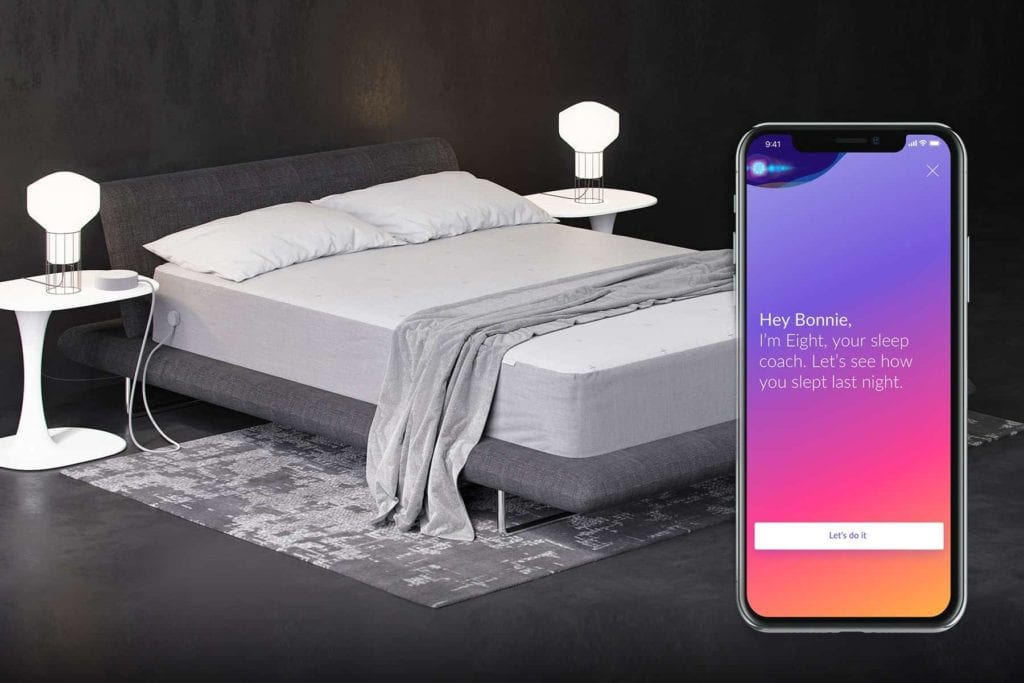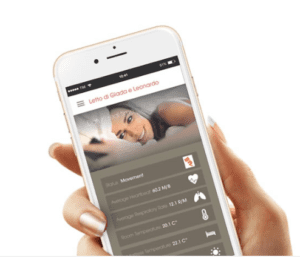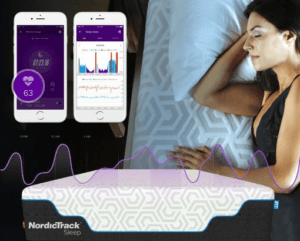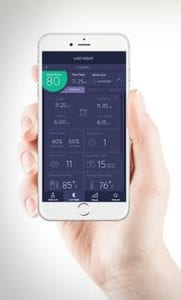
Smart Beds: Do You Need One For A Better Night Sleep?
The Cyber Sleep Era
We should have expected this, since so many other areas of life are being digitized. Cyber monitoring and management of business and industry has been extended to our vehicles and our phones, and it has been coming into our homes. They all can be on cyber networks.
The Smart Home
This was forecast about 20 years ago. Literature within communications technology companies, such as Ericsson, explained how their work was leading to homeowners being able to communicate with their houses from anywhere. A few of the functions named were monitoring surveillance systems, reprogramming lighting schedules, unlocking and relocking doors for service contractors or guests, and adjusting heating/cooling systems. The Smart House was then a thing of the future. That future is now.
Bigger Than Beds – The Internet of Things (IoT)
One predicted item was the Internet of Things (IoT). Smart appliances would connect with servers to order groceries, report problems, schedule maintenance, and relay messages to the owners, who could tend to their refrigerator or HVAC. This has expanded to health monitoring, and now includes beds.
The internet of things, or IoT, is a system of interrelated computing devices, mechanical and digital machines, objects, animals or people that are provided with unique identifiers (UIDs) and the ability to transfer data over a network without requiring human-to-human or human-to-computer interaction.
Smart Sleep Systems – From Pedometers to Sleep Trackers



![]()
The first pedometers were mechanical. They literally ticked off the number of steps taken or arm motions made, and were wound and reset the same way as a mechanical watch or clock. Then, like wrist watches, they were electrified, then digitized.
Then pedometers joined the IoT. Manufacturers of exercise equipment, such as NordicTrack, digitized the settings and readouts of treadmills, stationary cycles, and other exercisers. Simultaneously, digital monitoring of patients’ vital signs was developed. These systems have now come together and applied BlueTooth, cell phone, WiFi, and satellite technology to create health monitoring networks.
The Promise of Smart Beds
It was only a matter of time until IoT remote health monitoring would invade home bedrooms. But first, there had to be sleep tracking and smart beds. Sleeping places have come a long way from piles of leaves to digital beds.
Most of the focus of cyber sleep has been on health. It is essential for our well-being to get enough rest and restoration. Good sleep is not always easy to get. There may be any of several sleep issues to deal with, such as sleep apnea and hypopnea, neck and back pain, snoring, and digestive disorders. Some conditions, such as fibromyalgia and severe arthritis, may keep sufferers from sleeping well.
The purpose of a smart bed is to help us get enough quality sleep. Moving beyond preset settings for positions of an adjustable base, firmness in an adjustable airbed, and temperature (such as in a waterbed), our temperature, pulse rate, blood pressure, breathing, sleeping position, movements, snoring, pressure points, and other indicators may be monitored. This information can be uploaded to a database on an IoT server to correlate with measurements taken during the day to analyze our sleep and make recommendations and/or adjust the bed, perhaps even the lighting, temperature, and sounds in the house and the bedroom. The real question is, “How well does this work?”
Does It Work?
How well do smart beds work? Do they really help us sleep better? Better for what? For back and neck pain? For fibromyalgia? For sleep apnea and snoring? Judging by the recorded experiences of those who have used smart beds, for some people they work, for some they don’t. In considering this, here are a few caveats:
(1) Each person is writing about only one smart bed, which does not take into account other brands and models.
(2) The date of the review matters. The smart sleep systems may be at different stages of development at the times of writing.
(3) There are factors other than the bed itself and the smart sleep system which impact the quality of our sleep.
(4) At the same time, we should differentiate between smart beds and sleep trackers.
For Some Users, Unmet Expectation
Two writers who were disappointed with a smart bed – Megan Wollerton on Cnet and Katharine Schwab on Fast Code – used It Bed by Sleep Number. Both reviews were written in late 2016. The it Bed collects and displays a vast quantity of information. Both reviewers complained that they had to wake up, get out of bed, then get back in for the bed to self-adjust. This and other glitches actually worked against getting a good night’s sleep.
In 2016, the it Bed and its system were new, subject to refinement. However, more than a year later, January 2018, Jenny McGrath said in her review of the it Bed on Digital Trends, “It’ll track your sleep, but don’t ask this Sleep Number mattress to improve it.”
For Some Users, Satisfaction
Four self-adjusting smart beds are recommended by their users: Sleep Number 360 Series, ReST Performance Bed, BeautyRest Smart Motion, Eight Sleep Tracker.
Sleep Number 360 Series – These beds, unlike the newer it Bed, self-adjust while the user is still sleeping. These are adjustable airbeds paired with adjustable bases, and both firmness and position are adjusted in response to the sensors’ data.
ReST Performance Bed – ReST (Responsive Surface Technology, LLC) utilizes the monitoring technology of parent company PatienTech in its Performance Bed, which is a memory foam bed with air support on an adjustable base. This was developed for health care facilities. BodiTrak, their sleep tracking system, is also sold separately.
BeautyRest Smart Motion – Smart Motion is an adjustable base that adjusts its position in response to data from sensors.
Eight Sleep Tracker – The Sleep Tracker by Eight is a sensor fabric cover which fits under the fitted sheet on Eight’s own mattresses, but is also sold separately. It does not control the bed itself (at least not Eight’s mattresses), but it does control house and room settings (temperature, lights, sounds) through WiFi, IoT, or BlueTooth. It can also lock and unlock doors if they are connected.
Do We Need Cyber Sleep to Sleep Smart?
Smart sleep technology is now available to help improve our sleep experience. But is it necessary? For many generations, people have been falling asleep at night and waking up in the morning rested and ready to work through the day.
One Factor of Several
In the Industrial Age and the Information Age, there are many factors working against people getting a full night of restful sleep. Insomnia is prevalent, and many try the equivalent of counting sheep to fall asleep. Lives are so busy that many people have trouble finding the right time to sleep. And in this, the Information Age, using electronic devices, especially those with screens, interferes with adequate rest.
Non-technological barriers to good sleep include poor habits. Even the best smart bed may not be able to counteract the effects of these habits.
• Artificial lighting encourages people to stay up later. If these same people have to get up early in the morning, then they do not get enough sleep.
• Caffeine is good for helping you to wake up in the morning. Drinking coffee, tea, or other caffeinated beverages too late (less than three or four hours before bedtime) makes it harder to fall asleep.
• Alcohol, while it may make someone feel drowsy, actually degrades the quality of sleep, making it less refreshing and restorative than it should be. Therefore, alcoholic beverages too close to bedtime is a poor choice.
• Bright lighting, especially with a blue component (including most fluorescent and LED lights) interferes with melatonin production.
• Reading, listening to, or watching stressful news and entertainment (such as horror movies) too close to bedtime makes it harder to sleep well. It raises the Adrenalin level, which counteracts melatonin.
It helps if you practice good sleep hygiene. Basically, this is opposite of the above list. Another help is good nutrition.
Conclusion
Some smart beds can help us sleep better. However, we cannot depend on the bed alone. We ourselves need to learn and practice how to better prepare for bedtime and sleep smarter. Each person sleeps differently, so in order to sleep well, you definitely need to do a little research and test a variety of beds so that you find one that is best for your own unique needs.
Resources
- Sleep.org (National Sleep Foundation), “Scary Ways Technology Affects Your Sleep” (no date) https://sleep.org/articles/ways-technology-affects-sleep/
- How Technology is Changing the Way We Sleep: https://sleep.org/articles/how-technology-changing-the-way-we-sleep/
- Dr. Rick Swartzburg, D.C., Memory Foam Mattress.Org, “Sleep Disorder and Fibromyalgia” (2013) https://memoryfoammattress.org/sleep-disorder-fibromyalgia/
- The New York Times, “Bedtime Technology for a Better Night’s Sleep” (Dec. 24, 2014) https://www.nytimes.com/2014/12/25/technology/personaltech/bedroom-technology-for-a-better-nights-sleep.html
- Shelby Harris Psy.D., Psychology Today, “Will a New Bed Cure My Insomnia?” (May 3, 2012) https://www.psychologytoday.com/us/blog/the-land-nod/201205/will-new-bed-cure-my-insomnia
- Patricia Salber MD, MBA, The Doctor Weighs In, “How a Smart Bed Can Help You Learn to Sleep Better” (Jan. 30, 2017) https://thedoctorweighsin.com/how-a-smart-bed-can-help-you-learn-to-sleep-better/
- Megan Wollerton, C|net, “Does sleep tech really belong in the bedroom?” (Nov. 22, 2016) https://www.cnet.com/news/read-this-before-you-spend-more-than-1000-on-a-smart-mattress/
- Katharine Schwab, Fast Code Design, “Don’t Buy A Smart Bed” (Nov. 28, 2016) https://www.fastcodesign.com/3065751/dont-buy-a-smart-bed
- Harold Stark, Huffington Post, “The Art Of Smart Sleeping: Is Technology Changing The Way We Sleep?” (Aug. 10, 2016) https://www.huffingtonpost.com/harold-stark/the-art-of-smart-sleeping_b_11284642.html
- Samuel Gibbs, The Guardian, “How to use technology to sleep better” (Apr. 25, 2016) https://www.theguardian.com/technology/2016/apr/25/how-to-sleep-better-with-technology
- Adam Gabbat, The Guardian, “Don’t lose your snooze: the technology that’s promising a better night’s sleep” (Jan. 5, 2017) https://www.theguardian.com/technology/2017/jan/05/sleep-technology-ces-2017-las-vegas-new-products
- Larry Downes, Washington Post, “What’s blocking smart beds from helping you get a great night’s rest” (Feb. 26, 2016) https://www.washingtonpost.com/news/innovations/wp/2016/02/26/whats-blocking-smart-beds-from-helping-you-get-a-great-nights-rest/
- Simone Mitchell, News.Com.AU, “Can a smart bed actually improve your sleep?” (Sept. 8, 2016) http://www.news.com.au/lifestyle/health/health-problems/can-a-smart-bed-actually-improve-your-sleep/news-story/3b5bcd4e452d6a489987a9e1f45e5a84
- Julia Malacoff, Shape (Meredith Women’s Network), “Can a Specialty Mattress Actually Help You Sleep Better?” (Jan. 23, 2018) https://www.shape.com/lifestyle/mind-and-body/can-specialty-mattress-actually-help-you-sleep-better

